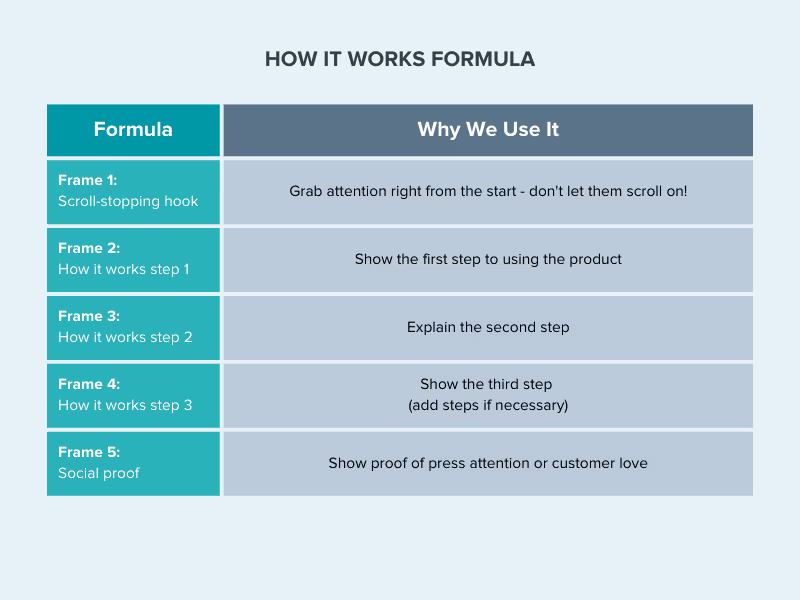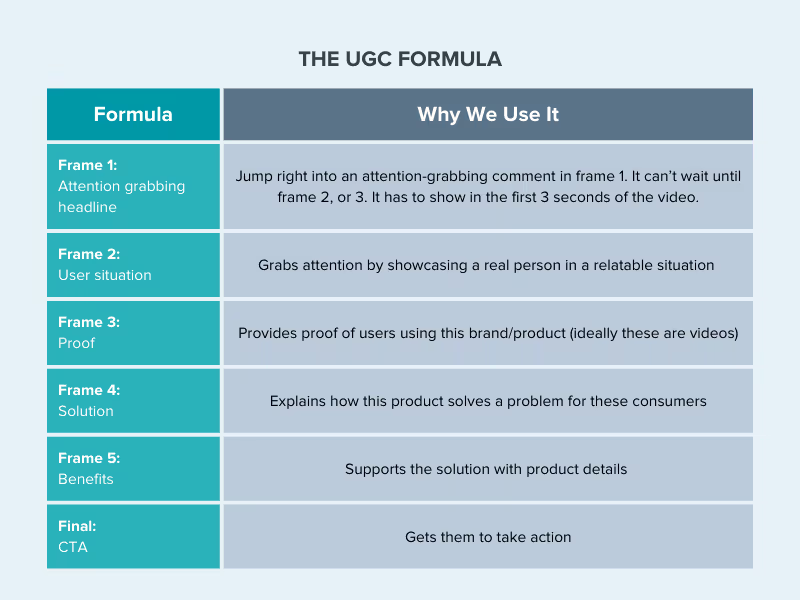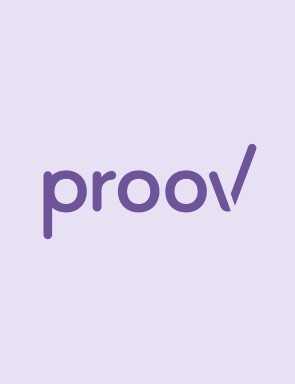In this article
Did you know that mobile Facebook users spend an average of just 1.7 seconds engaging with a piece of content? Meanwhile, desktop users spend a mere 2.5 seconds before moving on.
By the time you wrap your head around those numbers, Facebook’s billions of users have already scrolled on!
Why is this important?
The fact is that in today’s social media landscape, video ads are fast becoming a dominant form of advertising. In fact, many DTC brands have shifted annual spend in order to invest in more video advertising due to the benefits of doing so.
Video ad spending is projected to react $210.20 billion this year, with an annual growth rate of 10.97% from 2023 to 2027. The growing popularity of video advertising versus other ad formats with users justifies this shift in ad spend. Google data shows nearly half of internet users sought an online video about a product or service they were interested in before visiting a store.
When thinking about how to create successful video ads for social platforms like Facebook, Instagram, TikTok, and Snapchat, it’s clear that the most effective ads must grab a user’s attention from the very first second.
After testing thousands of ads across multiple paid social channels, Primer found that ads that got the highest engagement contained elements such as:
- Integration of native elements of the platforms they are using
- Tested and proven ad themes—or “big ideas”
- An attention-grabbing hook
- A frame-by-frame breakdown based on a tested formula
- A clear CTA to end the video
First and foremost, writing a winning video ad starts with a well-developed video creative brief, with a full video outline and all creative elements. Plus, a standardized creative brief template can be critical for creative teams, providing a roadmap to produce a high volume of ads and effectively scaling top-performing content.
Yet, there are many considerations when fleshing out what works and what doesn’t across multiple social channels and audiences. Here are our top tips for writing a successful video ad script.
Start with a Video Creative Brief Made for Video Ads
A successful video ad script starts with a finely tuned video creative brief template, outlining your video in full detail, frame by frame.Starting with a creative brief template designed specifically for video ads provides several benefits. First, it helps you structure your copy and visuals in a format that makes it easy for both you and the video editor to map out or storyboard your video. This structure also makes it easy to come back later and iterate on this video ad once you have found wins. This allows your creative team to align and stay on target.
One of the top considerations when formulating a video creative brief is determining which channels are best for placing the ad.
For instance, ads made specifically for TikTok also perform well on Instagram, though the reverse is not always true.
Start with a big idea brief to test a brand-new concept, such as a theme, audience, value proposition, product, or benefit.
Then scale top-performing ads with iteration briefs. Once you find a winning ad from your big idea, then you develop several iterations, or variations, of specific ad elements, allowing you to both scale the win and also hone in on the specific components that your customers are responding to.
Developing these briefs will allow you to write a unique video ad script that you can transform into engaging content.
Select a Theme That Has Proven to Convert
At Primer, we're constantly testing new ad formats, themes and messages. Through this testing, we have honed in on a handful of high-converting themes that we know work every time.
One of those is what we like to call “How It Works.”
This theme drives conversions every time because it breaks down how a product works to help solve the problem of your target customer.

Take, for instance, a video ad by lawn care company Sunday, which uses the How It Works theme to great effect.
Here’s another look at the theme applied to this Sunday ad.

Now let’s take a closer look at what your video ad script should include.
Break Down Your Video Into Sections

Just like the example illustrated above, each section of your script should be outlined in your video ad brief.
Keep in mind that the intro—or the first 3 seconds of your video—needs to hook the user and halt their scrolling. Otherwise, they’ve already moved on, and you’ve lost a potential conversion.
This means your video intro should have a strong hook and movement (no still images)!Some examples of effective hooks include:
- Price-focused: “Need affordable [product type]? Watch this!”
- Informative: “Let me show you my biggest life hack for X.”
- Versus the Alternative: “I wanted to stop doing X, so I tried this instead.”
Check out all 101 of our video hooks to stop users from scrolling and get more ad clicks.
Next, break it down into frames at each transition moment in the video. Note that you should keep the copy very short for each section, whether this is verbal or text—about 2-3 words per screen or frame.
Content Beyond the Template
To transition from a template to a fully-developed video ad script, you need to determine the most essential messaging for your audience and apply that to the ad template. Key components to include in your ad messaging includes:
- Social or press proof: This is a way to showcase the recommendations of others who’ve reviewed your product or service. It is essentially a form of “word of mouth,” often presented as UGC, that increases your credibility and trust with a specific audience.
- Key benefits to the customer: The video's messaging should focus on your customer and how your service or product helps them, emphasizing the benefits provided rather than just the features themselves.
Beyond these key elements, you can develop the specific content of your video ad by using any of Primer’s proven-to-convert video ad templates.
Here are a few examples.
User-Generated Content (UGC)
When trying to capture the native style of a paid social channel like TikTok, you can’t do better than a UGC style approach. This approach will feel like an organic post to the platform while highlighting how your product or service solves a consumer’s problems.

Buyer Decision Questions (BDQ)
Buyer decision questions are questions your highest-converting buyer personas are likely to ask before purchasing a product. For instance, they might have questions about price, quality availability, and how it works. This video ad template anticipates and answers those questions.

Press + Testimonials
This approach uses press quotes and consumer testimonials to demonstrate social proof that the product has been proven to work and is preferred by consumers. You can use customer voiceovers honestly reviewing the product to show UGC.

These are a few of our templates you can use to structure and iterate top-performing video ads. Though, regardless of which you choose, one thing all successful video ads share in common is that they direct the viewer to take action.
End on an Action

Okay, so someone watched your ad. They engaged. They didn’t scroll. Now what?All ad content relies on a strong call to action (CTA) at the end of the message, something to drive people to take a certain action, like setting up a free consultation, subscribing to a newsletter, or downloading a deliverable—a next step that moves them further down the buyer’s journey.
Your video ad is no different and should give your audience a clear action to perform after watching. How you present your CTA depends on your audience and the specific paid social channel where you’re running the ad.
A few examples include:
- A special offer at the end of the video (e.g. Try for $15)
- A benefit the customer can expect to receive (e.g. Start sleeping better today)
- “You have to check out this product” or “you can find this product at your local [insert store type here]” at the end of a UGC ad.
Bonus Tip
Remember, ads that feel native to the platform are far more likely to get engagement than those that appear generic, highly polished, and focused on brand graphics and presentation. Also, make sure the voice and performer in your video match your brand and that they comea cross as an authentic customer!Authenticity matters, so don’t be afraid to shoot footage on your phone for your video ad. While you may have concerns about an ad like this fitting within your brand identity, the fact is that ads that mimic native content simply perform better and garner more conversions.
Footage from a cellphone can feel more organic to certain social platforms. Not only that, but phone quality has improved drastically over the years. Gone are the days of grainy resolution and choppy framerates. It’s no longer just amateurs using phones to produce video content. Even music superstars like Selena Gomez have used devices like the iPhone to shoot professional music videos.
How Primer Can Help
Growth marketing is a high-stakes, high-reward proposition. Rapid, high-volume testing of your videos and social ads enables you to track the most effective trends, scale your success, and iterate top-performing ad content.
Primer works to help our partners develop winning ads and scale by handling the process for you, including creative strategy, design, production, reporting, and media buying.
If you need high-quality ad creative with a rapid turnaround, our online platform Primer On-Demand gives you access to videos, images, and landing pages with a proven track record of driving conversions.Schedule a free consultation with Primer to learn how creative testing can help you script successful video ads


.jpg)
.jpg)
.jpg)
.jpg)
.jpg)
.jpg)
.jpg)



